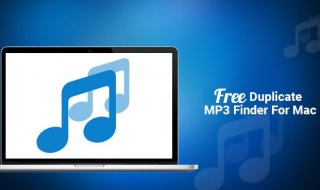Medical transcription services have been around since transcription became available in the 1950s. Still, advances in technology are changing what was once a slow and tedious practice into one that can be performed much more quickly and easily.
Here are the top seven technological advances in medical transcribing services to give you an idea of where this service has been and where it’s going!
Speech Recognition
This is arguably one of the most technologically advanced and impressive innovations in medical transcription services, especially with how it has developed over time.
Not only has it been a great help to medical professionals but to those who are visually impaired as well. The speech recognition tool helps transcribers focus more on a person’s medical history and notes, which are far more critical than typing out every word.
It also reduces the number of errors that might be made because there’s no need for punctuation or spelling. It’s difficult for anyone to get 100 per cent accuracy when doing transcription work, so this system takes away some of that risk.
Automated Reporting

When medical transcriptionists were required to perform every step of their job manually, patient reports had to be hand-written. With an automated system, dictation can be recorded and transcribed directly into electronic medical records.
Not only does automation save companies time and money (and patients stress!), but it also increases accuracy by providing real-time feedback to medical transcriptionists.
Automated reporting is beneficial for dictating complex procedures like surgical procedures or illnesses with many terminologies. Dictations are transcribed faster and more accurately thanks to the ability to backtrack through sentences.
Increased Accuracy
It’s hard to believe that, for so long, medical transcriptionists have relied on a typewriter to produce transcripts. Yes, typing out what doctors dictated into a tape recorder is one of those well, that’s just how we do it! Practices that many people aren’t interested in questioning.
Fortunately, transcribing services evolved past typewriters and punched cards – with an accuracy rate of more than 99 per cent. In fact, over 90 per cent of doctors say that their accuracy is unaffected by the changes in technology.
They also don’t mind the increase in turn-around time (from hours to minutes) and the lower cost per page. If you need transcribing services or are a doctor looking for new transcribing services, look no further than here at medical transcribing services.
EHR Solutions
Electronic health records, or EHRs, are perhaps one of the most revolutionary developments in medical technology. While they’re hardly a new development, they’ve become increasingly necessary to facilitate electronic data transfer between healthcare institutions.
As more and more hospitals adopt EHRs, medical transcriptionists can tap into real-time access to patient information via online databases that allow for more straightforward error checking.
Voice Recognition
One of the many recent innovations in medical transcribing services is voice recognition software. Automated speech recognition systems have made it possible for transcriptionists to quickly scan audio files by typing what they hear instead of typing everything manually (which can get tedious).
Thanks to voice recognition software, providers no longer have to worry about entering all of the data themselves. A doctor could talk over the phone while sitting at his desk, telling the software what procedure he just did on a patient without ever picking up a pen! The software does a translation as if they were typing it themselves.
E-Prescribing
A relatively newer innovation, e-prescribing is a process where physicians enter their prescription orders electronically through speaking, and then the audio transcription software turns everything into transcripts, usually through a system hosted by the pharmacy. The result is faster fulfilment of doctor’s orders—a definite improvement over paper scripts. The future of medicine lies in these technologies.
Progress Tracking Tools
Doctors can track a patient’s progress and treatment over time to ensure better patient outcomes. The doctor and patient can communicate through audio which is then translated into paper scripts for keeping the records for future reference.
This is especially important for diseases like cancer, where treatments vary from patient to patient based on each person’s biology.
Progress tracking tools allow doctors to record every stage of treatment, including symptoms and severity, so that medical staff can provide more precise care. Diseases like cancer need to be tracked carefully because the type of treatment varies depending on the individual’s biology.
Conclusion
The world of medicine has come a long way since Hippocrates’ time, and technological advances have played a big part. With inventions like Google Translate and translation services software now on computers, it’s possible to interact with patients who speak another language and get their history without requiring transcribing services—cutting down on wait times and increasing efficiency.
And as technology improves, so will medical transcribing services, which will only benefit patients more in years to come.



